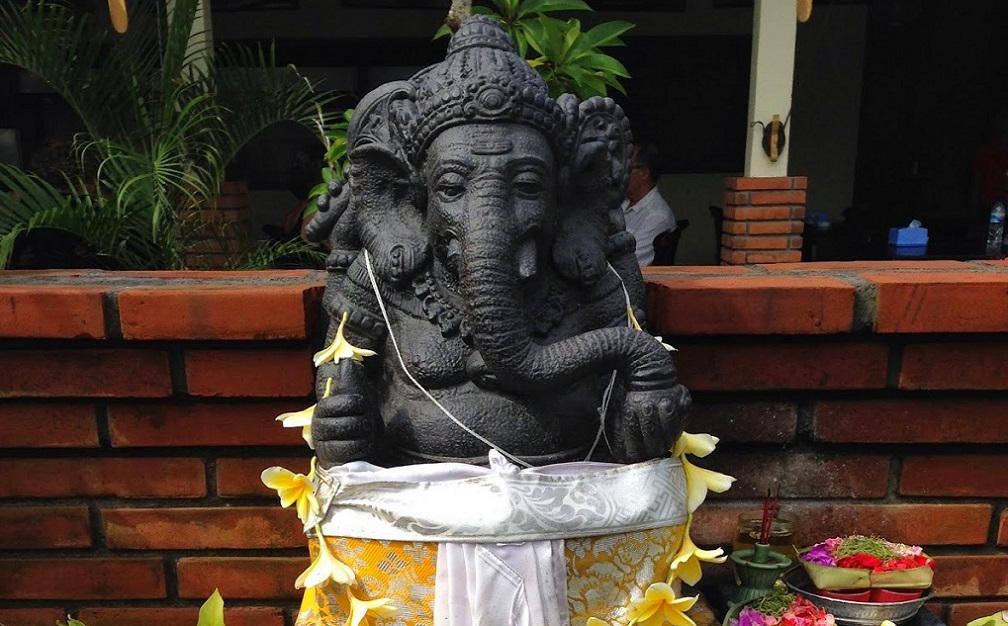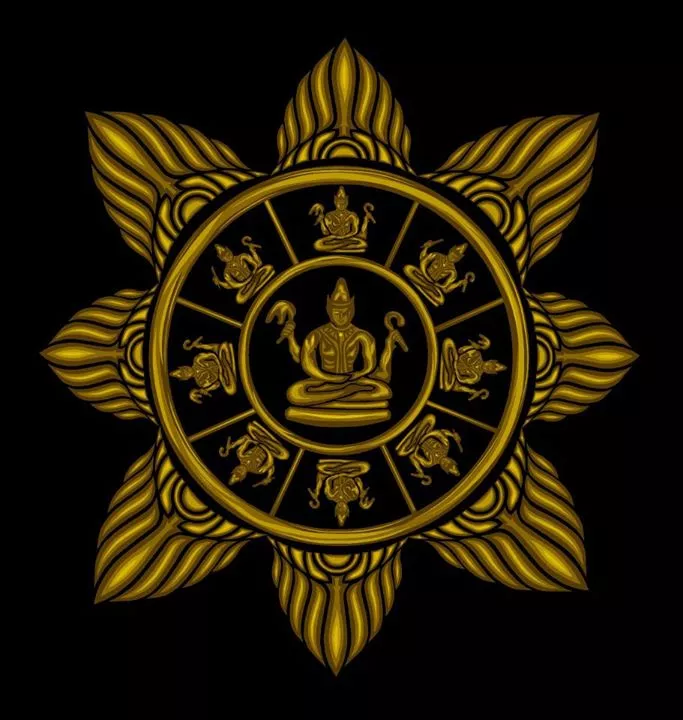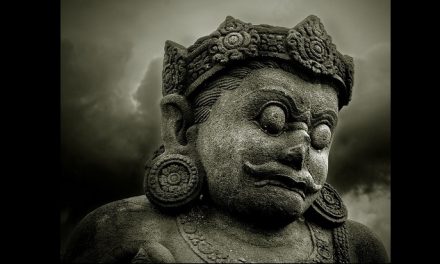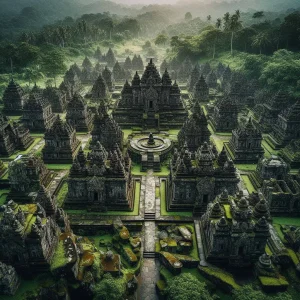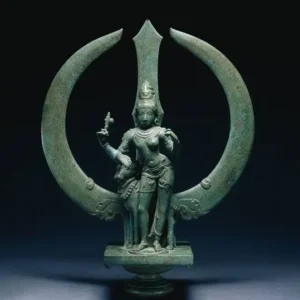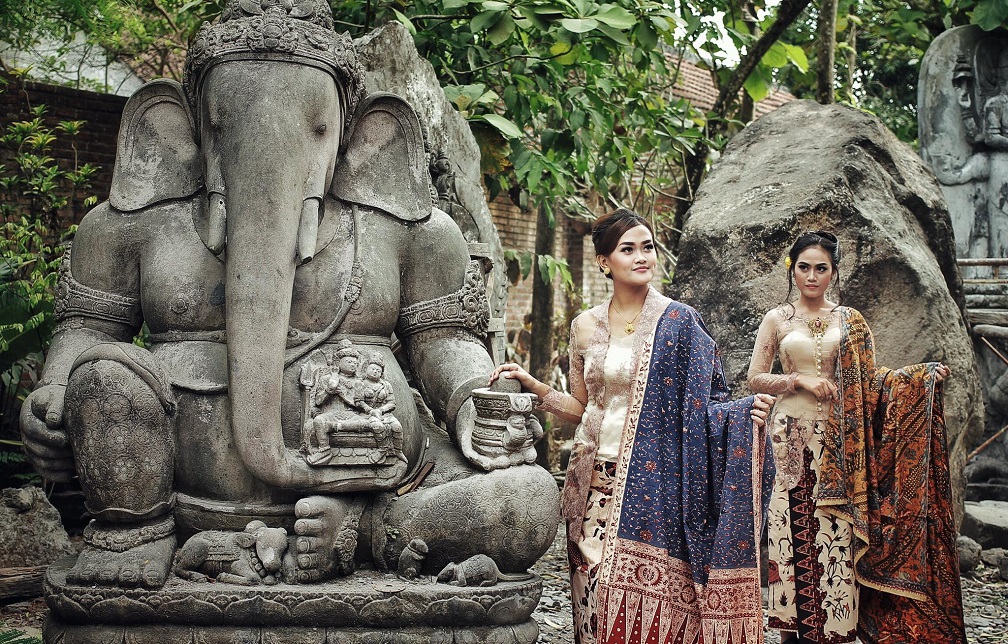
Image source: Didi Trowulanesia
Ganesha is also known as Vinayaka (‘one who removes obstacles’) or Ganapati. Ganesha removes fear from the minds of his worshipers and helps them to surmount every difficulty.
His large head personifies knowledge and intelligence. Ganesha’s small eyes represent keen, precise observation. He reminds us to focus our attention on the workings of our own mind, watch how it runs here and there, never immobile, a continuous flow of unceasing thoughts.
Ganesha worship can bestow both siddhi (success), buddhi (intellect) and riddhi (wealth). Because of his power of buddhi (intelligence), he is also revered in Buddhism and Jainism.
Ganesha, Wealth and the Mushika mouse
Ganesha offers prosperity and success to all who invoke him. As Lord of Beginnings and the Remover of Obstacles, he’s the first to call on before the undertaking of a new task or business.
Ganesha is associated with general abundance, which explains a lot his popularity. Yet the tiny mouse at his feet called Mushika represents our worldly desires that need to be overcome. It is the symbol of mankind’s ignorance and its deep attachment to worldly objects. By riding on the mouse, Ganesha shows that one must overcome all petty feelings and desires.
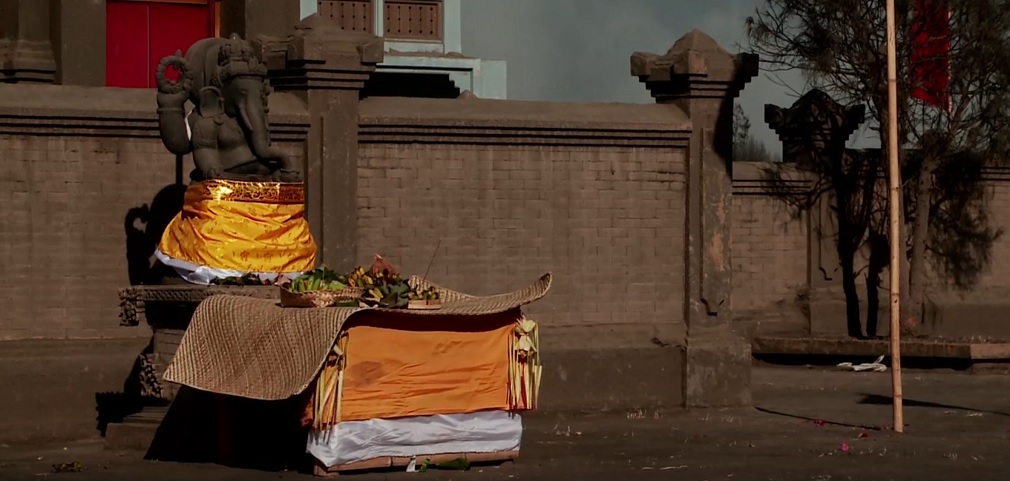
Ganesha pratima at Luhur Poten Temple, Mount Bromo, Java
Ganesha: the most popular deity
From India to Bali, his image is everywhere. All over Asia and beyond, Ganesha is worshiped by Hindus, Buddhists, Jains, Chinese, Japanese and others alike.
- In India and Southeast Asia, he is worshiped by people of all faiths. Ganesha icons are often found in places of potential danger, such as steep slopes, river and road crossings.
- In Japan, Ganesha is known as Kangiten, the God of Fortune and Prosperity. The Shingon ritual practice also centers on Ganesha.
- In Thailand, Cambodia, Myanmar, Malaysia, Laos and Vietnam, where Buddhism and Hinduism are merged, Ganesha appears as a protector and grantor of success. As lord of business, his shrine stands outside Bangkok’s World Trade Centre. The world’s tallest Ganesha statue is in Khlong Khuean, Thailand.
- In Tibetan Buddhism, Ganesha appears in the Thangka paintings alongside the Buddha.
- In Jainism, Ganesha is worshiped together with Mahabir.
- In Bali, he is usually showing the abhaya mudra (gesture of protection and fearlessness). Ganesha is seen as a protector in Indonesia, where he can be seen sitting at the gates of temples.
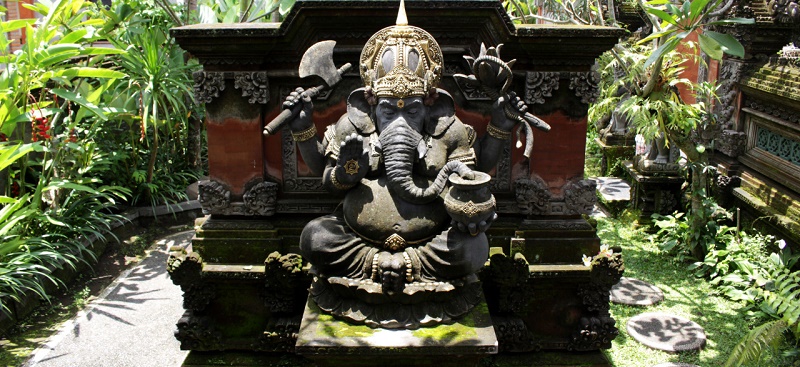
The Indonesian representations of Ganesha often present a very rich esoteric iconography, which meanings are obscure and only known by the initiates. The Javanese Smaradahana scripture narrates Ganesha’s mythological origin.
In India, Ganesha is usually paired with Maa Lakshmi, the Goddess of Wealth and Prosperity, but in Indonesia, he is more often paired with Devi Saraswati, the Goddess of Learning.
He is first mentioned as Ganapati in the Rig Veda (hymn 2.23.1 and 10.112.9). The Mahabharata mentions him as Ganesvaras and Vinayakas. The Ganapati Upanishad asserts that Ganesha is same as the ultimate reality, Brahman. This is put in practice by the Ganapatya sect.
Traces of Ganesha worship have been mentioned all over the world, way beyond the Indosphere. Inscriptions mention him in Azerbaijan. A golden Ganesha idol was found in Kuwait. He was worshiped as Janus by the Romans. A Ganesha murti was once unearthed in a village in Bulgaria.
Ganesha statues are increasingly used as good luck charms in the Western world, both at home and at work.
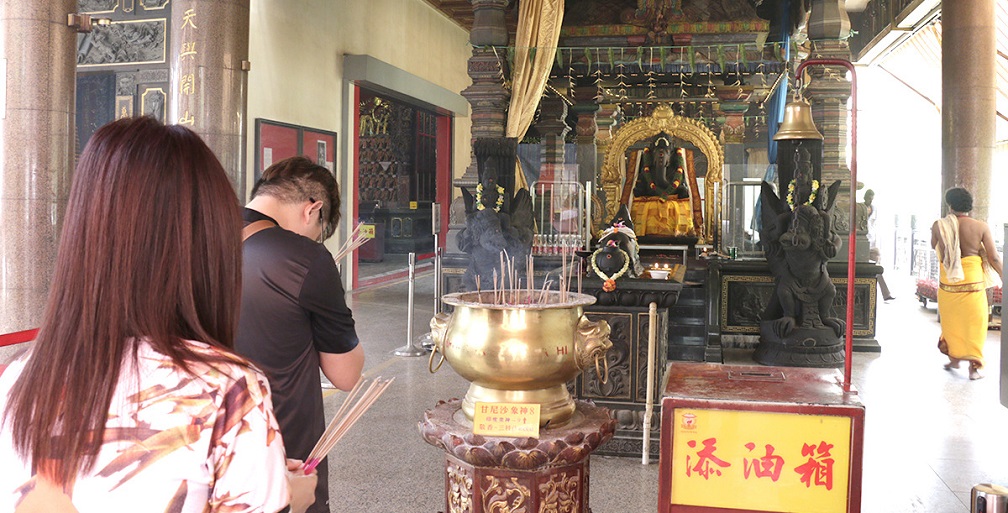
Lord Ganesha worship at Loyang Tua Pek Kong Temple, Singapore
Ganesha meaning: Purification of the Mind
Ganesha worship leads to self-purification as Ganesha removes the obstacles of ignorance, delusion, attachments and egoism from his devotees. Lord Ganesha helps us see the truth which is hidden.
Ganesha frees our minds from fear, the most major of all obstacles, and strengthens our resolve and courage. By worshiping Ganesha, devotees can overcome fear and gain strength and courage to realize their goals.
Ganesha reigns over muladhara chakra. He is the ruler of both the instinctive mind and of the intellectual mind. He clears the mind so that awareness can flow into it.
Ganesha enjoys worship through constant repetition of his name (japa). To worship Ganesha, hold his form steady in your mind with eyes closed. Talk to him and expose to him all your problems. Ganesha answers you by influencing events in unseen ways. Situations will change and doors will open through your prayers. Rishi Bhrigu recommends the worship of Ganesha in the Tattriya Upanishad.
Ganesha’s Attributes
Every body part of Ganesha’s representation teaches us something of deep spiritual significance:
- Small Eyes – symbolize concentration, as only a person who has controlled his mind can achieve success in life.
- Big Head – symbolizes Wisdom. His head indicates intelligence and discrimination.
- Big Ears – means ‘listen more’. Ears areused to gain knowledge.
- Small Mouth – means ‘talk less’ and value our words.
- Big Belly – Digest all good and bad in life, and you will attain calmness. It also signifies the ability of Ganesha to swallow the sorrows of the universe.
- Blessing Hand – offers protection and guidance to the spiritual seeker.
- Four Arms – represent the four cardinal directions and his mastery over the physical world (similar to how Lord Brahma has four heads).
- Mark on the Forehead – Ganesha’s urdha mark signifies being a Master of Time.
- Axe – represents the severing of all bonds, attachments and desires, and therefore of pain and suffering.
- Sweets – The fourth hand holds modaka (sweets), which symbolizes the reward of sadhana (spiritual practice).

The Ashtavinayaka: Eight Manifestations of Ganesha
The Ashtavinayaka (Eight Forms of Ganesha) are mentioned in the Mudgala Purana, which is consecrated exclusively to Him. In each form, he defeats each of the eight major human weaknesses:
- Vakratunda (defeats Matsaryasura, the demon of jealousy and envy)
- Ekadanta (defeats Madasura, the demon of arrogance)
- Mahodara (defeats Mohasura, the demon of confusion and delusion)
- Gajanana (or Gajavaktra) (defeats Lobhasura, the demon of greed)
- Lambodara (defeats Krodhasura, the demon of anger)
- Vikata (defeats Kamasura, the demon of lust)
- Vighnaraja (defeats Mamasura, the demon of ego and possessiveness)
- Dhumravarna (defeats Abhimanasura, the demon of self-infatuation, pride and attachment)
